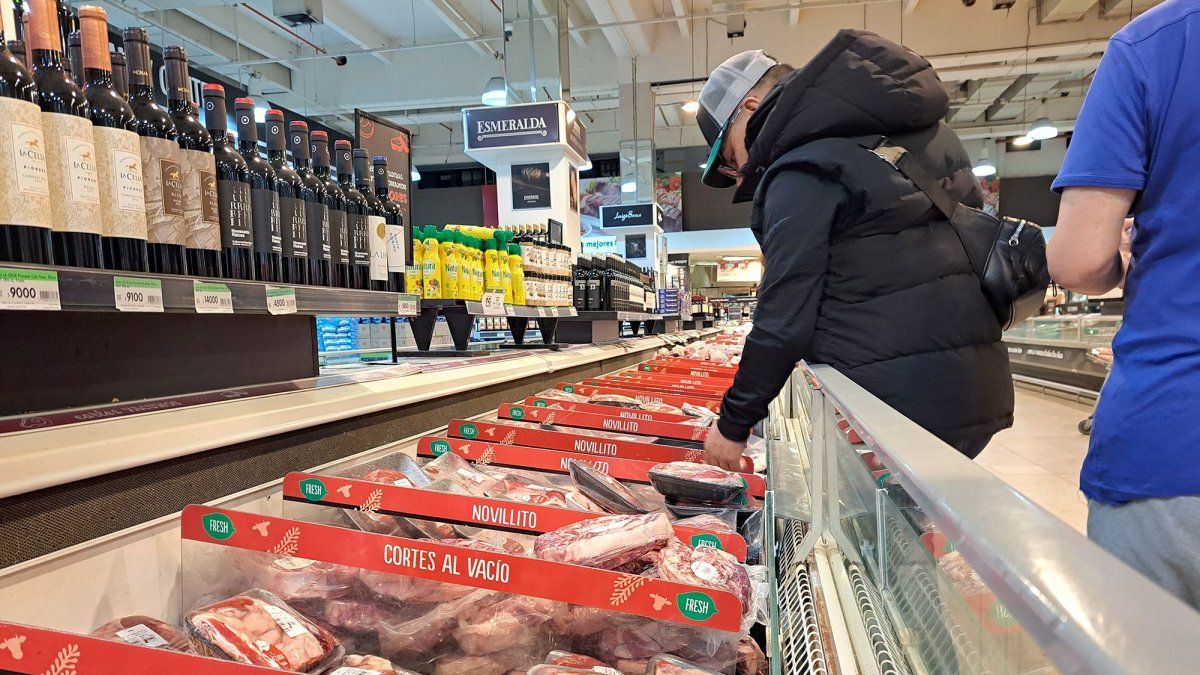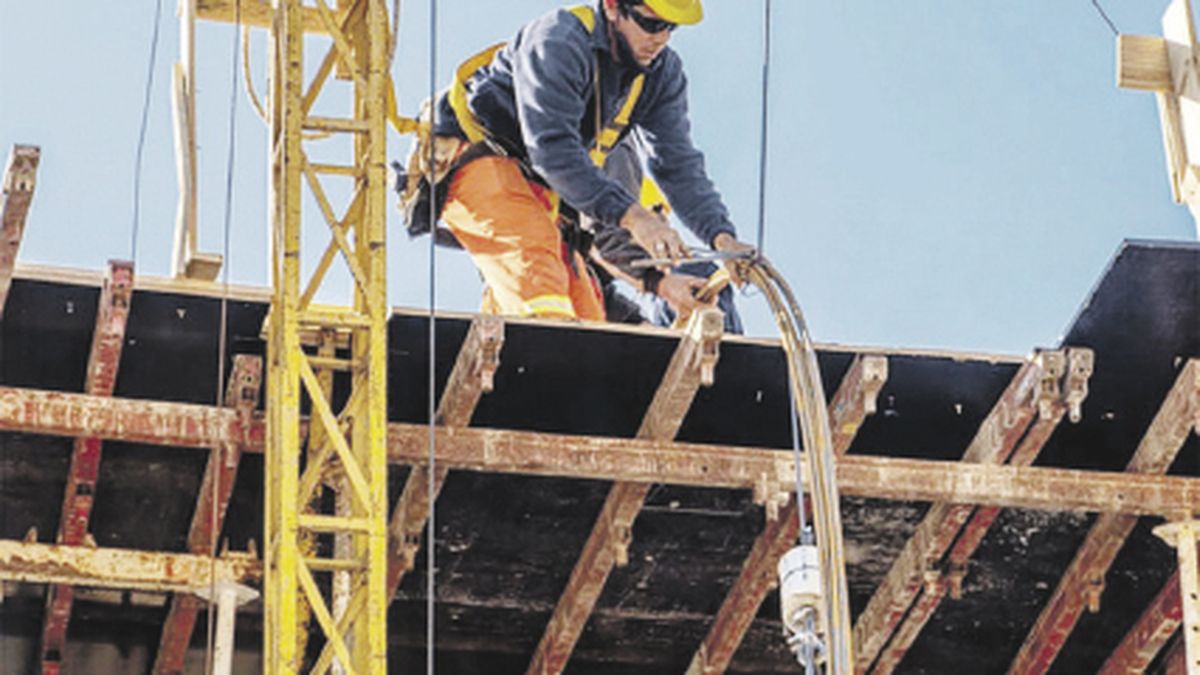Meat consumption reached historically low levels. According to the Chamber of Industry and Commerce of Meat and Derivatives (CICCRA), on the average from January to October, We Argentines consume 47.2 kilos of beef per inhabitant per year. This figure represents a drop of 11.2% compared to the same period in 2023 and you have to go back to 1996 to find similar data.
In the report that corresponds to the tenth month of the year, it is clearly explained that “despite being very behind in price by at least 50%what is happening with consumption is a catastrophe. The explanation for the fall is simple: beef was replaced by chicken and pork because with an average value of one kilo of beef you can buy three kilos of chicken or two and a half kilos of pork and, when the economic situation and purchasing power is weakened, this happens and it is the pocketbook that decides.”
It could be said that we are the only country in the world that consumes so much beef and that considering all proteins of animal origin, we are in second place (with 114 kg/inhabitant/year) behind the United States (which consumes 224 kg/inhab/year). It is true that we are “well fed” if it were not for the fact that we are actually talking about an average where a large part consumes much more than 47 kilos and others can barely buy a shoulder steak per week for the little ones in the home. That is the reality of millions of homes in Argentina, where the data that hurts the most is not exactly the drop in consumption.
Without a doubt, what changed in recent years (we stopped consuming 70 kg/inhabitant/year a long time ago) was that other meats gained prominence, like chicken and pork. In fact, consumption of both grew so much that in the case of chicken it even surpassed the vaccine. But this is purely and simply due to consumer behavior regarding prices on the shelf. What we Argentines like most is beef and if it weren’t for the prices, we would be at record consumption levels worldwide. There are plenty of examples to demonstrate that beef consumption in our country is extremely elastic: if there is money in the pocket, consumption increases and vice versa. In this sense, the head of CICCRA, Miguel Schiariti, explained that “beef was replaced by chicken and pork because with an average value of one kilo of beef you can buy three kilos of chicken or two and a half kilos of pig. “The one who decides is the pocket.”
As always, In butcher shops, prices move in line with the areas and purchasing power of each neighborhood, But now another variant has been added and it is that of those who – even in the wealthiest neighborhoods – ask for a certain amount for the day or up to what is reached, which is what they have that day. While the Government talks about the end of the recession, an important part of the population is still suffering the blows of the fall in purchasing power and the lack of recovery of salaries.
All this contrasts strongly with the opinions of several analysts and even representatives of some productive links within the meat chain. It happens that each one sees their part and in the primary and industrial links the costs increased sharply, so it is logical that they want or even need a recomposition in the prices they receive for each live kilo.
The panorama is complexbecause for consumption to stop its fallwe will have to review margins and make more efforts, as the consumer who continues to choose beef over other offers probably does.
With this outlook, it is likely that the usual price increases for this time will not occur in 2024, at least to the magnitude seen in previous years. To be clear: meat increases twice a year and it does so “in leaps and bounds.” One of those steps is raised at the end of the year because due to seasonal reasons there is usually less supply of property and because with the good weather and the holidays, demand increases and prices increase.
This year, the reality is different. Prices are not going to increase due to greater demand for meat and it is likely that the drop in production will hardly be reflected on the butcher shops’ blackboards. Ariel Morales Antón, federal coordinator of the Chamber of Slaughterers and Suppliers (CAMYA) assured Ámbito that today they are “sustaining the kilos of work, we try to maintain the client, we absorb part of the cost increases because they could not be transferred” .
According to Morales Antón, today we live the reality of the market and gone are the times of price increases. “When you inject money into people that is not genuine, inflation is generated and the relationship between supply and demand is not real, with inflated consumption.” For the leader of the meat sector, price increases may come because demand increases or because there is less supply and in this case what is going to happen is that there will be a decrease in the supply of livestock starting in the coming weeks. With this level of meat consumption, it is likely that “the increase in price will be small, it could even go unnoticed, because it is likely that in order not to lose a sale, those few points will be absorbed by the slaughterer and the butcher.
The challenge is to increase production
Beef exports reached the highest volume in the month of October in the last 57 years. 699,987 tons of bone-in beef equivalent were sent abroad for 2,122 million dollars.
International prices improved, the Government is working to open new markets and restrictions were removed that normalized the export market. Without a doubt, the path is that of export, because it is likely that – in part – this will involve sustaining a sector that needs greater investment, technology but above all, increasing the national beef stock. In this sense, Morales Antón highlighted to Ámbito that export “is the only way to support the producer, because the primary link, the one who has the cow with her calf, the reared calf, the feedlotero who feeds it every day balanced food, corn, everyone in the chain has to be sustained and the only way is with export and greater production. We have to encourage production and the only way and greatest motivation for that is for the live kilo to have a nominal value where whoever produces does not lose money.”
Without interventions or magic recipes, only with the regulation of the market through supply and demand does meat production have a future. If livestock production is a business, there is light at the end of the road.
What will happen to prices in the summer?
It is important to clarify that in the coming months we are going to have some increases in beef, because there was a lack of winter replacement. During the last few months, the market came out “fatter” and winter replacement prices increased, so until March, April or May we will have some increases.
According to Morales Antón, “if we are going to have an increase of 10% or 15% in the fat estate, we would have to absorb a part and leave between 5 and 7%. We have to go little by little until people can pay, because if it increases suddenly, people will reject it.”
Source: Ambito




